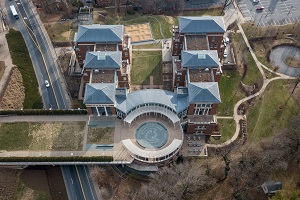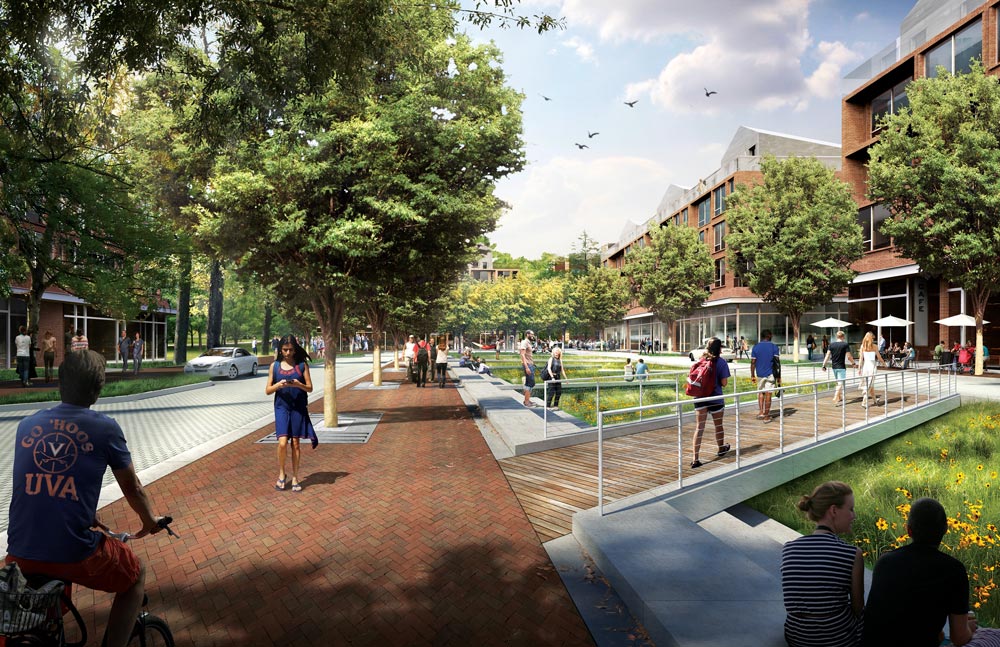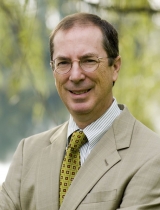UVA Foundation–Serving the University’s Needs
The University of Virginia‘s evolving landscape of new buildings and green spaces depends on the availability of real estate beyond central Grounds. Tim Rose, Chief Executive Officer of the University of Virginia Foundation, explains how the Foundation’s acquisitions and gifts have helped to further the University’s mission.
UVA Foundation—Serving the University’s Needs

With the creation of what was then referred to as the “new hospital,” the University used one of the last remaining pieces of land near central Grounds for its expansion. As such, President Hereford, with the help of other leaders at the University and some outside consultants, decided to create a real estate organization that would focus on providing land for the University for its future growth. That entity, now known as the University of Virginia Foundation, has been working since then to provide expansion opportunities for the University’s academic, research, healthcare and outreach activities.
Early acquisitions, on behalf of the University, included the Westover Estate which is adjacent to St. Anne’s Belfield’s lower school, the Boar’s Head and Birdwood properties, Foxhaven Farm (which is located behind Birdwood), and the Fontaine and UVA Research Parks. The Foundation’s activities expanded to include the renovation and management of fraternity/sorority houses, the management of real estate gifts on behalf of the University, and an acquisition program of in-town properties that are adjacent to the University’s boundaries. Some of these key acquisitions include properties along Ivy Road, Emmet Street, Brandon Avenue, West Main Street, and Jefferson Park Avenue, among others.

These acquisitions provided land upon which key University projects could be built. Some of those projects include the Battle Building at the University of Virginia Children’s Hospital, patient care buildings in the Fontaine Research Park, and the South Lawn project (known as Anne Nau Hall).
Several properties are currently in either early planning or development phases. Brandon Avenue, 95% of which was purchased for the University by the Foundation, is becoming a “green street” and will be the home of new residence halls and a student health building. The UVA Research Park has become a secondary home for significant healthcare activities, with approximately 500 employees from the University at the Park today. Several more buildings are in the planning phase which will lead to additional University staff at the Park. The Ivy Corridor properties (which were formerly inhabited by gas stations, restaurants, a bank, and hotel) are in the planning phases for future University expansion.

Further to the west, the University has three significant athletics facilities in planning and construction. This summer, a second phase to the McArthur Squash Center will open. The World Master’s Squash Championships will be held there at the end of July, and the facilities will be open this fall for the UVA men’s and women’s squash teams. Also opening this fall will be the University of Virginia’s golf practice facility. This 14,000 square foot building will be the home of UVA men’s and women’s golf teams. Plans for a UVA tennis stadium are nearing completion with the hope of soon beginning that project, also to be located on the Boar’s Head campus. The tennis stadium will be home to UVA’s men’s and women’s tennis.
The real estate gift program has provided UVA with significant funds, as properties were sold and turned into financial assets for University use. Properties donated have varied from condos in San Francisco, to lots in St. Croix, to homes in Charlottesville.
In the short history of the UVA Foundation, with an intense focus on serving the University’s needs, significant land holdings and developments have been established to further the University’s mission. The University is well-positioned to meet future needs for expansion.
- Musings on National Violin Day
- Making the Promise Real: How a UN Tax Convention Can Fulfill the UNDHR’s Vision
- Having a Drink With Your Donkey: The Absurd in Antiquity
- UVA Club of Atlanta: Virtual Pilates Class
- UVA Club of Fairfield/Westchester: Cavs Care - Food Pantry Donation Drive
- UVA Club of Washington DC: Tour of the U.S. Capitol
